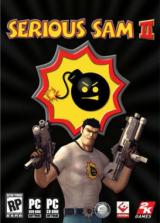So why make our own engine? Back when the first Serious Sam was built, our team consisted of a group of enthusiasts trying to break into the game market. Unfortunately, this meant that publishers were not interested in taking a look at anything short of a full game. It also meant that the team depended on themselves to provide all resources for the game's development. Our team had to rely on our own knowledge and abilities to create a game engine that would best suit the type of game we wanted to create. This was an all-out action shooter with bright, open spaces and tons and tons of enemies on screen at once. Both the game and the engine did a great job in achieving this goal, resulting in a very successful game that became known for exactly those features and for really pushing the hardware to the maximum.
As proof of this, Serious Sam was widely used by hardware sites as a benchmark tool used to compare performances of new hardware. After that, the game engine was constantly improved and two more games were released on later versions of the engine (Serious Sam: The Second Encounter and Serious Sam for Xbox). Our team kept the engine on-par with all existing top-of-the-line game engines of the time and continued to use everything the hardware could offer.
When the work on Serious Sam II started, we were very confident in our ability to produce a cutting-edge game engine that would be able to match any other game engine both in performance and in supported feature set. The content department was intimately familiar with the workings of the engine and was able to put their skills to use to their maximum ability. Given all of these reasons, it was only logical to continue in the same manner and to build our own engine.
Also, to be fully competitive, we wanted to have full control of every aspect of game development, including the feature set provided by the engine. Other games don't even have similar gameplay as Serious Sam, so we had to be sure that the engine could meet all requirements presented by the chosen gameplay style. These, traditionally, include being able to confront wave after wave of enemies, alone or with friends in cooperative mode (one of Serious Sam's hallmarks). Because of all these, building our own engine was the only logical choice.
Our engine incorporates all the advanced shader effects, like per-pixel lighting with normal-map bump-mapping, parallax (or offset) mapping, and a lot of nice reflections and refractions. On top of that, there's a very powerful terrain shader which can blend up to eight textures in one pass. That can be very handy, especially when it comes to texturing vast environments.
And when a game like our upcoming title Serious Sam II has that many open and bright worlds, we also choose to go with complete support for true HDR rendering. Of course, a nifty bloom post-processing effect on top of that makes everything look really shiny and lifelike. From the performance side, the engine can stretch big time. On one side, it supports even pixel shader model 1.x (which makes the game playable on older hardware), but at the same time the engine fully utilizes all the bells and whistles of new technologies like, for example, NVIDIA SLI (with really high efficiency rate).






